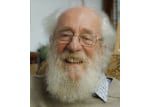
Peter Rayner
“An engineer born and bred”
The son of a garage (and later machine tools company) owner, Peter Rayner feels that he was predestined to become an engineer. Some of his earliest toys were tools, including a junior hacksaw with which he attacked his bed. He was placed in the ‘A’ stream at grammar school, which meant that he had to study Latin rather than engineering drawing, so he tried to get himself transferred, but without success. He had his own lathe by the age of 15, and although he passed his O-levels at 16, he wasn’t told that engineering was a university subject, so he left school for an apprenticeship at Pye, where he moved between departments every three months and attended the local technical college one day a week. After two years, his break came when he was placed in the Pye Television audio lab, whereupon he was taken under the wing of Gordon Edge, who would later become the Managing Director of Cambridge Consultants and Scientific Generics, two companies that underpin the ‘Cambridge Phenomenon’.
At the end of his apprenticeship, Rayner became the first employee at Cambridge Consultants, which had been established about a year before. He found himself in what he describes as “a shambolic workshop full of eccentrics, with a marvellous atmosphere”. The company was growing quickly at that time, and he was soon the head of digital electronics, employing graduates who, on paper, were more qualified than he was. He thought that it would be good to obtain a degree, so he went to see his former tutor at the technical college who suggested that he skip a BSc and jump directly to a PhD. He applied to numerous universities, and The University of Aston offered him a place. He then obtained SRC funding that, in 1968, enabled him to complete a PhD on a method of making efficient audio amplifiers.
During this period Rayner had started to recognise the power of mathematics in engineering, and decided to move out of electronics and into communications. The University of Essex offered him a research fellowship in the fledgling field of speech recognition but no grant was forthcoming, so when a lectureship became available at Cambridge University he applied for that. By chance, the University was looking for someone in communications, and they created a junior lectureship for him. Shortly before he arrived at Cambridge in 1969, the FFT had been developed, hugely reducing the computing power needed for certain applications. Rayner was impressed, and recognised that digital signal processing was the future.
Starting out with an IBM computer that used paper tape and a teletype for input and output, he and one of his undergraduates set up what was possibly the first real-time signal processing system. It could just about display a sine wave, but that was hugely exciting at the time.
Having started with two PhD students, the Signal Processing and Communications Research Group, of which he was head, was growing rapidly, and many of Rayner’s PhD students were later to become full professors, multi-millionaires and even one billionaire. Rayner, who became a Fellow of Christ’s College and picked up a Readership and then a Professorship along the way, soon became renowned for his research work in the fields of digital signal processing, optimal non-linear filtering, neural networks, and Bayesian statistics. He has since described the group as ‘a statistical mathematics group trying to solve general real-world problems’, and one of his greatest successes in this was the creation in 1988 of CEDAR Audio. Established to reduce or even eliminate the clicks, crackle and hiss of degraded recordings, CEDAR flourished and, thirty years later, is still preeminent in its field, with a string of awards and scientific achievements such as the invention of spectral editing and near-zero latency digital dialogue noise suppression. Another success was in the development of algorithms to restore old movies, which resulted in another of his students setting up a company – Green Parrot Pictures – that was later purchased by Google to help ensure the picture quality of YouTube videos.
Today, Rayner has an active interest in hearing assistance and the development of blind source separation algorithms – the technology to separate one voice from a babble or from overwhelming background noise. He says that, when this problem is solved, it will be of huge benefit to humanity (there are around 700,000,000 people with hearing impairments worldwide) and someone is going to make a lot of money from it. He is currently an Emeritus Professor of Information Engineering at Cambridge University as well as a director of CEDAR Audio and an advisor to numerous other companies that emerged following the work carried out in the Signal Processing and Communications Research Group.
